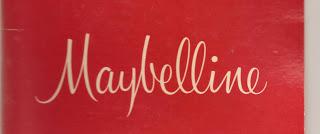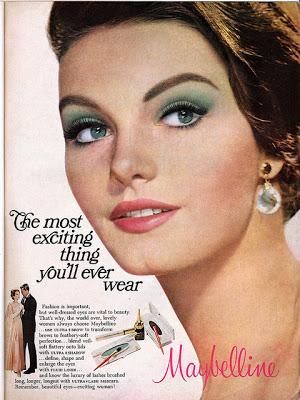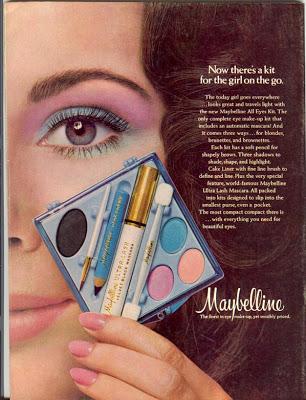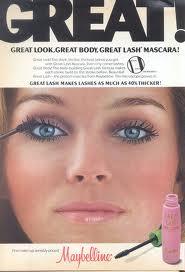
Harris A. Neil Jr. with his
friend DeAnne
6. THE PLOUGH MERGER By Harris A. Neil Jr. The morning of Saturday, October 7, 1967 began normally enough at our house. My wife and I got our two boys, ages 4 and 2, down for breakfast and set about putting it on the table. Then I went to pick up the Chicago Tribune from the front lawn, for something to read while we were eating. After a while I got to the Business Section, and down at the lower half of the first page was a headline— Maybelline and Plough Agree to Merger Plan 102.3 Millions Are Involved This was the first I had heard of the merger, and I didn't know how to take it. First I felt left out, wondering why I hadn't been in on this news. Then it went down hill from there, and finally I did something I’d never done before: I picked up the phone and called Tom Jr. at his home. Despite what we now know was a marathon work schedule to get the merger complete, Tom couldn't have been more concerned or helpful in our conversation. He took half an hour or so and helped me understand why the lead-up to the announcement had to be held in secrecy. After our discussion he had me fully on board with a new perspective, and that helped a lot. Incidentally, that was the last time I either talked with or saw Tom. He retired immediately.
Monday morning came, and walking in to work was like entering a morgue. Everyone was in a daze, seeking information, and nobody could help much. I did get some insight from John Cole, and that helped. The biggest shock was that Tom Jr., Rags Ragland and Dorothy Molander were no longer with the company, they had all retired. The four executive offices now had only two occupants, John Cole and myself. Tom’s and Rags’s offices sat vacant as a reminder of the event. It was spooky. As days went on, we began to get visits from various Plough executives and managers, and even Abe Plough himself. Most of my own contact was with their Production Vice President, Joe Sternberger and his staff. In particular, the Industrial Engineering Department group of six or so showed up regularly beginning almost at once, and began asking questions to gain quick knowledge of the Maybelline operation. This took time from my other duties and was redundant, but it went with the territory. Somewhere in this time period Mr. Plough made his first visit to the company with Joe Sternberger. Since I was the youngest and most expendable member of our management group, I fell into the job of picking them up at O’Hare field and bringing them downtown to their hotel or to the company. This became a repeating pattern, whenever Mr. Plough came to town I’d pick him up with whomever he was with on that trip. It could be Joe, or Lanny Smith, or just about any of his key executives. I began to dread these runs to the airport. Mr. Plough was old even then, and boasted that he had reached the age where he could draw full salary and could also collect full Social Security! He treated me with almost mock respect, calling me “Mistah Neil.” I cringed when I heard that, because he would then follow up with a work-related question, to which of course he already knew the answer. All this went on while I was driving in Chicago traffic, getting those people either downtown or to the building on Ridge Avenue. By some miracle we always made it. There was so much going on in this early period that it’s hard to sort it out, but one thing that they saw immediately was the woeful lack of space we were working in. Also, in the Plough operation they had a regional distribution system for order shipment, spread across the country. As I remember it, they had distribution centers in Cartaret, New Jersey; Miami, Florida; Memphis, Tennessee; LaMirada, California; and in Alsip, Illinois. To integrate the Maybelline product line into this decentralized system, Joe took the helm and immediately had us put a full second shift, bolstering the small night shift we had at the time. Plough also found and leased a warehouse space near the Ridge facility, which we called “Wolcott” after the street location. This became the finished goods warehouse and shipping point. The idea was to ship merchandise not directly to customers but to the regional distribution points and have them handle customer shipments. The Wolcott facility was a rather quiet setting compared to the hectic pace that was going on at the Ridge location. Herb Zimmerman, who succeeded Ches Haines, when he retired, was more or less in charge over there, continuing as Traffic Manager. I got over there at times too, in the course of my job. One of the things that developed in this arrangement was that Rags Ragland, would visit over at Wolcott. Of course he was now in retirement, but he bled Maybelline and it hadn't let go of him yet, nor he of the company. This also put him into the changing picture, and he didn't like what he saw or heard any more than the rest of us. However, he handled his observations always in the context of his investment, and that part of it was moving along very well. By the spring of 1968 I came to the personal conclusion that I was not fitting into the Plough template at all, and felt very out of place. It was mutual, and finally one day I made a mistake and had a red-faced scene with one of the Industrial Engineers who had been bugging me. Joe got wind of it and called me into John Cole’s office for a “woodshed” session. He raked me over the coals pretty well, but part of it was positive, suggesting that I look into training courses to tame my temper. This I took, and then I surprised myself and returned Joe’s favor. I thanked him for his thoughts, and suggested to him that if he and Plough, Inc., continued to come at the Maybelline operation in the rough-shod way they were going, “The wheels would fall off.” That ended our discussion, and I don’t remember ever seeing Joe Sternberger again. Truth be known, I was already searching a way to leave the company, and soon made a connection. My wife and I decided that if we had to make a move we’d make it a big move, and relocate to Colorado. This we did, to pursue a franchise business with an outlet in Colorado Springs, so I submitted my resignation to John Cole. We left Maybelline and Chicago in August, 1968 to begin our new life. After a few setbacks things smoothed out for us, and the memories of Maybelline and all those wonderful people began to fade, but not altogether. In early 1968, Dun and Bradstreet listed the Maybelline management group (as of 1967) in its “Million Dollar Directory,” a compilation of major U. S. companies. They followed later that year with a “September Cumulative Supplement” that happened to show the lineup after the Plough merger. Here is how those two listings looked: PRE-MERGER Thomas Lyle Williams Pr. & Tr. Thomas L Williams Jr Exec VP & Sec John W Cole VP Pur Harold W Ragland VP Sales Harris A Neil Jr Prod Mary Ann Anderson Adv POST-MERGER Abe Plough Pr Harry B Solmson Exec VP R Lee Jenkins VP John W Cole VP Pur Herbert H Bunchman Sec Sam B Hollis Tr Harris A Neil Jr Prod Mary Ann Anderson Adv This is another way of expressing the sad story that had unfolded, even that early in the merger. There would be more sadness.




